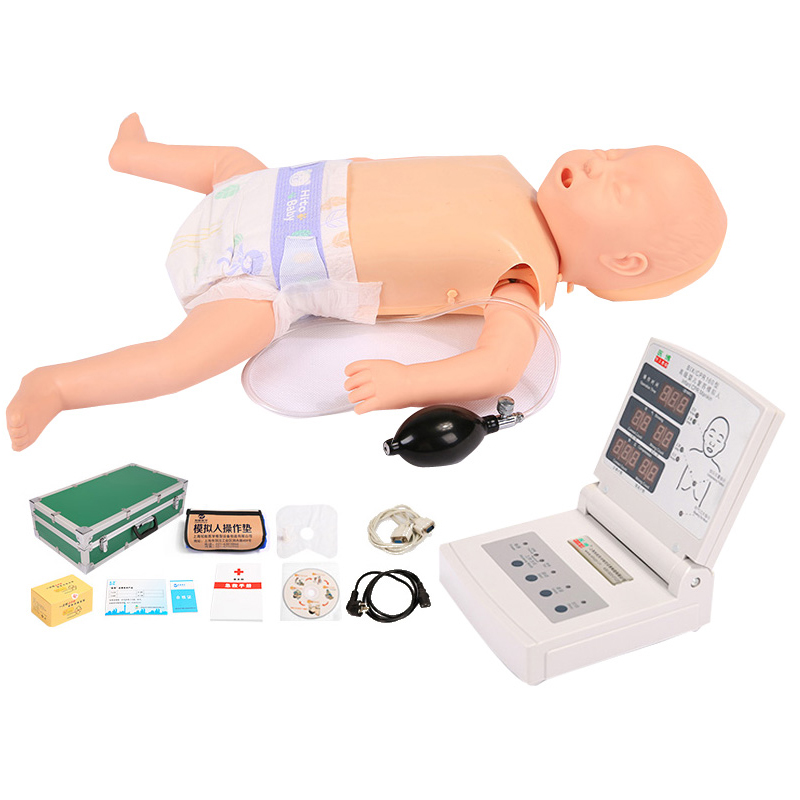Welcome to visitShanghai Chinon medical Model & Equipment Manufacturing Co., LTD
Ensuring that infant CPR simulators provide accurate resuscitation training is a crucial part of medical training. Here are some suggestions to ensure that simulators can provide high-quality, accurate resuscitation training:

Choose a high quality simulator: First of all, it is essential to choose an infant CPR simulator that is certified by an authority and has a high degree of fidelity and repeatability. Such simulators can simulate real infant physiological reactions and provide real training experience for medical staff.
Regular maintenance and calibration: Simulators require regular maintenance and calibration to ensure their performance and accuracy. This includes checking the simulator's internal mechanisms, sensors, displays and other components to make sure they are working properly. At the same time, it also needs to be calibrated against the use of the simulator to ensure that the feedback it provides is consistent with the real situation.
Simulate a variety of scenarios: In training, simulators should be used to simulate a variety of scenarios, such as different diseases, different injuries, etc. This can help medical staff better grasp the cardiopulmonary resuscitation skills in different situations and improve their ability to cope with complex situations.
Combined with real cases: In training, real infant cardiopulmonary resuscitation cases can be combined to allow medical staff to simulate the real rescue process. This will not only improve the skill level of medical staff, but also help them better understand and cope with the challenges in actual rescue.
Feedback and evaluation: Simulators should have real-time feedback and evaluation capabilities. During training, simulators can provide real-time feedback on the medical staff's operations, such as depth, frequency, and strength of compressions. At the same time, the simulator can also record the operation data of the medical staff, providing a basis for subsequent evaluation and improvement.
Trainer's guidance and feedback: In addition to the simulator's feedback, the trainer should also give timely guidance and feedback to the medical staff during training. The trainer should propose specific suggestions and improvement measures according to the performance of the simulator and the operation of the medical staff.
To sum up, ensuring that infant CPR simulators provide accurate resuscitation training requires multiple efforts such as selecting high-quality simulators, regular maintenance and calibration, simulating multiple scenarios, incorporating real cases, providing feedback and evaluation, and coaching and feedback from trainers. Only in this way can we provide high quality and accurate resuscitation training for medical staff and improve their ability to respond to infant CPR emergencies.
|
NEXTпјҡMeticulous, caring: the warmth and professionalism of trauma caregivers
LASTпјҡBack simulation acupuncture practice platform -- the secret weapon of acupuncture skill improvement |
Return list |